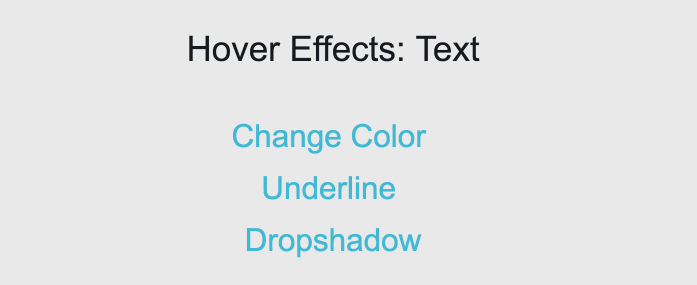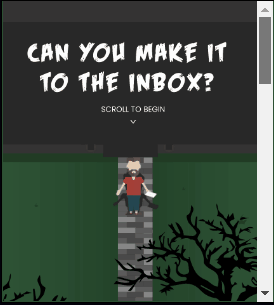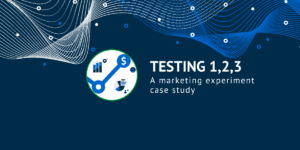Email officially turns 40 years old in 2021. For me, the perfect way to celebrate is with a discussion about how to enhance your customer’s email experience using Advanced Email Interactivity.
What is Advanced Email Interactivity?
A developer uses Advanced Email Interactivity (AEI) when incorporating HTML and advanced CSS techniques to enhance basic email interactivity within the body of the email.
While this definition may seem basic, it allows one to separate AEI from other interactivity that can occur in the digital space.
Let’s break down this definition a bit more and explore just what is possible with AEI.
What is Basic Email Interactivity?
Basic email interactivity starts with the first email ever sent over a network in 1971. Credited to Ray Tomlinson, this email was sent between two DEC-10 mainframe computers that were sitting next to each other. At that time, email was just a server message with only two basic interactions: read and reply.
It wouldn’t be until 1996, 25 years later, that the email format would be extended to support text in character sets other than ASCII, as well as attachments of audio, video, images, and application programs. This allowed for the modern set of basic email interactions we all use on a daily basis: read, scroll, click and reply.
In 2007, Apple would give email it’s latest set of interactions with the launch of their new smartphone, the iPhone. That innovation expanded email interactions to include tap and rotate.
Now we have our basic email interactions: read, scroll, click, tap, rotate and reply.
A developer uses AEI to enhance the basic interactions available to a subscriber in order to enhance their experience with the content. This is achieved by taking the existing basic interactions — read, scroll, click, tap, rotate — and adding functional layers to them.
(Side note for those keeping score at home, there is no way to enhance the reply interaction in email. It remains the most basic, but also most essential, email interaction!)
How can AEI be used to Enhance Basic Interactions?
AEI can make it easier for a user to digest the copy in an email. These types of interactions include:
- collapsable sections that expand when a user hovers on the section heading
- hidden callouts that appear when a user hovers over or clicks on a hotspot
- changing the legibility of a section of copy when the user hovers over it
- hiding a large amount of images using a carousel
- hiding body copy until the user rotates their device


AEI can be used to enhance the clicking or tapping interaction by adding more features to the click than just clicking on a link or image to be taken to a landing page. These types of additions include using a click to:

- expand and collapse content sections
- reveal hidden content
- animate an element
- switch between layered content
- skip to a content section
AEI can be used to enhance the scrolling interaction too! While scrolling is sometimes looked over as an interaction, AEI can be used to give it more importance. AEI can add importance to the scroll with:
- scrolling the body of an email around a fixed element to create a parallax effect
- scrolling the email content underneath a fixed CTA

While not a formally recognized interaction in email, rotating a mobile device can also be enhanced by AEI. Rotating is typically used to switch between an email’s mobile and desktop version. However, AEI can be used to enhance even that interaction, including:
- revealing the body section of an email
- showing the expanded image of a thumbnail
- reorganizing content from stacked to side-by-side
- revealing hidden email content
These are just some of the ways that AEI can be used in your campaigns. What makes AEI so powerful is you can combine a number of different techniques to create a powerful user experience all within a single email.
Some examples of AEI include:
- Hover and click state changes
- Image carousels
- Reaction Surveys
- Social sharing
- Animated buttons
- ‘Accordion’ expandable content sections
- Embedded videos
Where Can I Use AEI?
As with any email technique, the application of it is limited by the email client. Thankfully, most of the modern email clients support one or more advanced email interactivity techniques. The clients with the widest support include:
- AOL
- Apple iPhone
- Apple Mail
- Gmail
- Yahoo! Mail
Apple email products support the most AEI techniques, so if your subscribership opens their emails in these clients, you have nearly free reign to try all the AEI techniques you can!
Sadly, nearly all AEI techniques do not work in Outlook clients (except Outlook for Mac). Outlook clients (both desktop and web based) still lag far behind other modern email clients with their HTML and CSS support (even the newest versions like Outlook.com and Outlook 365). However, you can fake a lot of the AEI techniques in newer Outlook clients with animated GIFs, since support for them was added to Outlook platforms in 2018.
Is there a Downside to AEI?
While AEI can be used to enhance your user’s in-email experience, the main drawback is that every technique does require additional development effort. The key is to balance the amount of effort with the expected lift in customer engagement.
Simple techniques like hover-state changes can be implemented relatively quickly, and don’t require a fallback experience to replace it.
More complex techniques, however—like image carousels, content accordions and embedded video—do require more development time to be implemented properly. And each case requires a fallback experience to replace it.
Your subscribership also plays into the tradeoff of implementing AEI. If you recall from above, the email clients that support AEI are limited to:
- AOL
- Apple iPhone
- Apple Mail
- Gmail
- Yahoo! Mail
It’s important to dig into the details and find out which email clients the majority of your subscribers use. If your subscribership is not using one of the platforms that support AEI, there’s little benefit to implementing any enhancements.
Lastly, since AEI actions occur within the email, accurately tracking user interactions with the techniques becomes difficult. Because many of the AEI techniques happen without leaving the email, tracking those interactions cannot happen with the normal tracking pixel. Instead, the interactions have to be planned so that their engagement can be derived from the final action taken.
40 Years of Innovation
Though this may seem like a number of drawbacks to AEI, these can all be overcome with proper planning and production timelines. Narrowing down what email clients your subscribers are using will help you figure out which email enhancements are worth the extra lift—that effort will go a long way to delight your subscribers. And what better way to celebrate 40 years of email than with enhancing your campaigns with AEI to experience just how far email has come!




